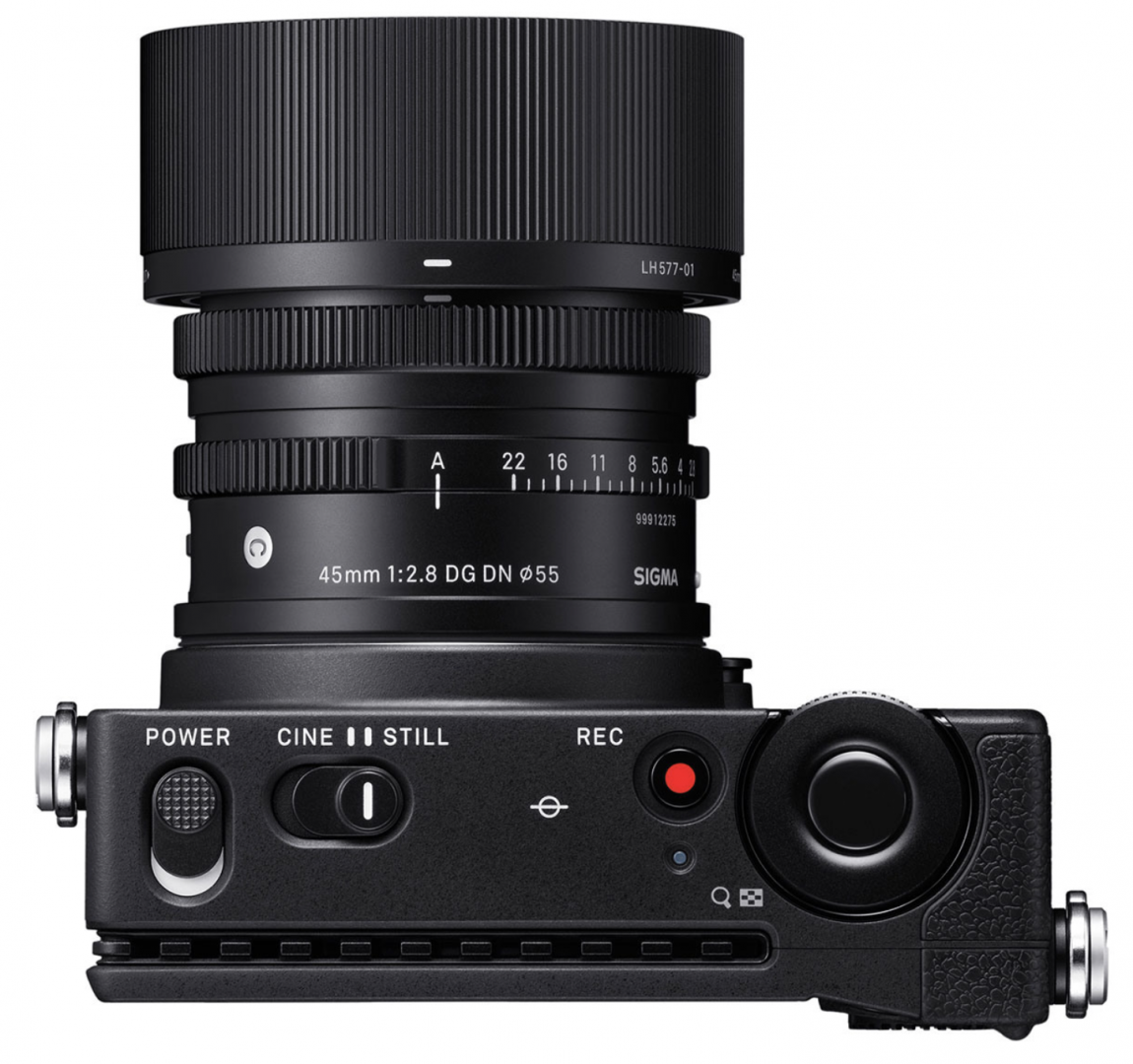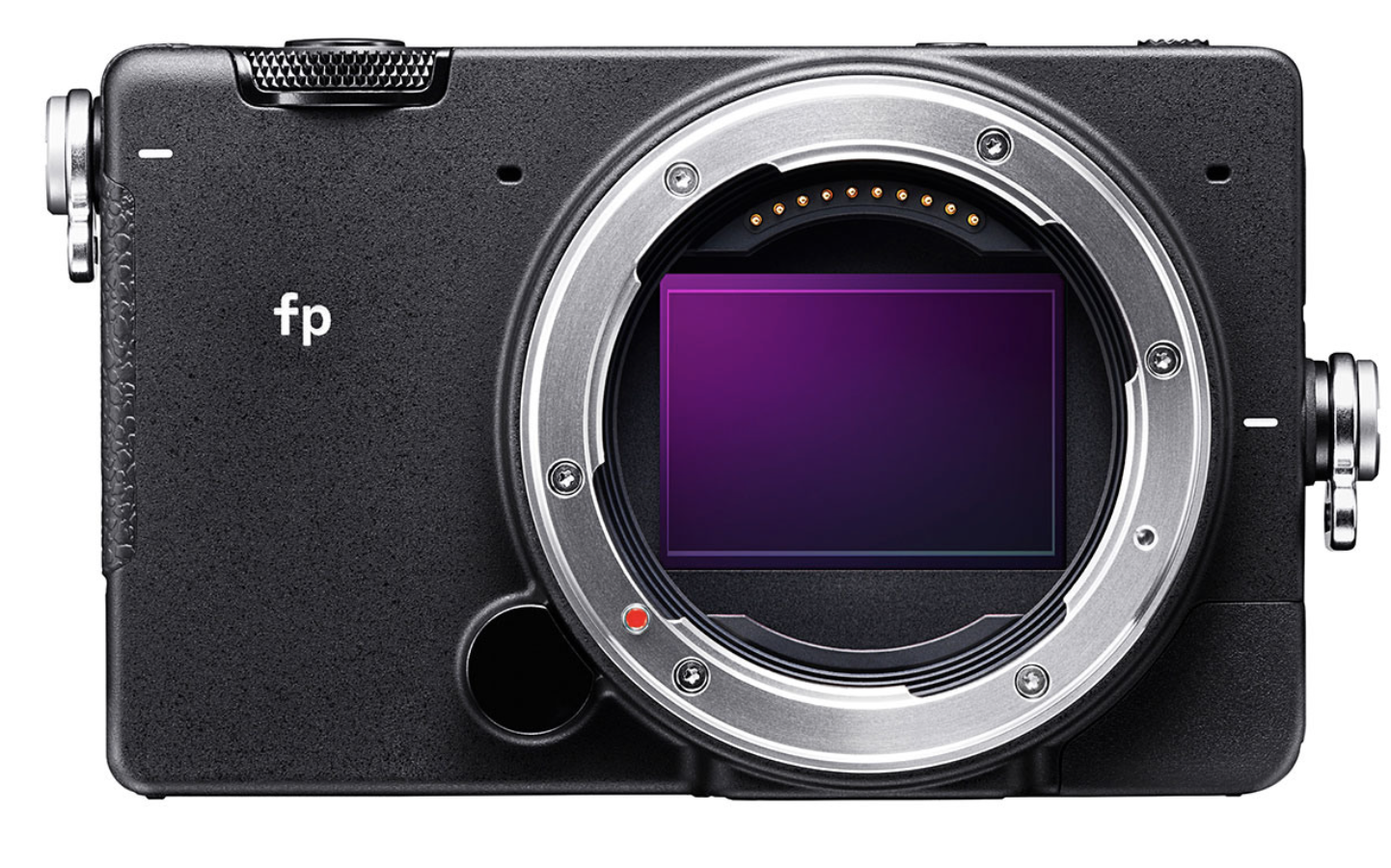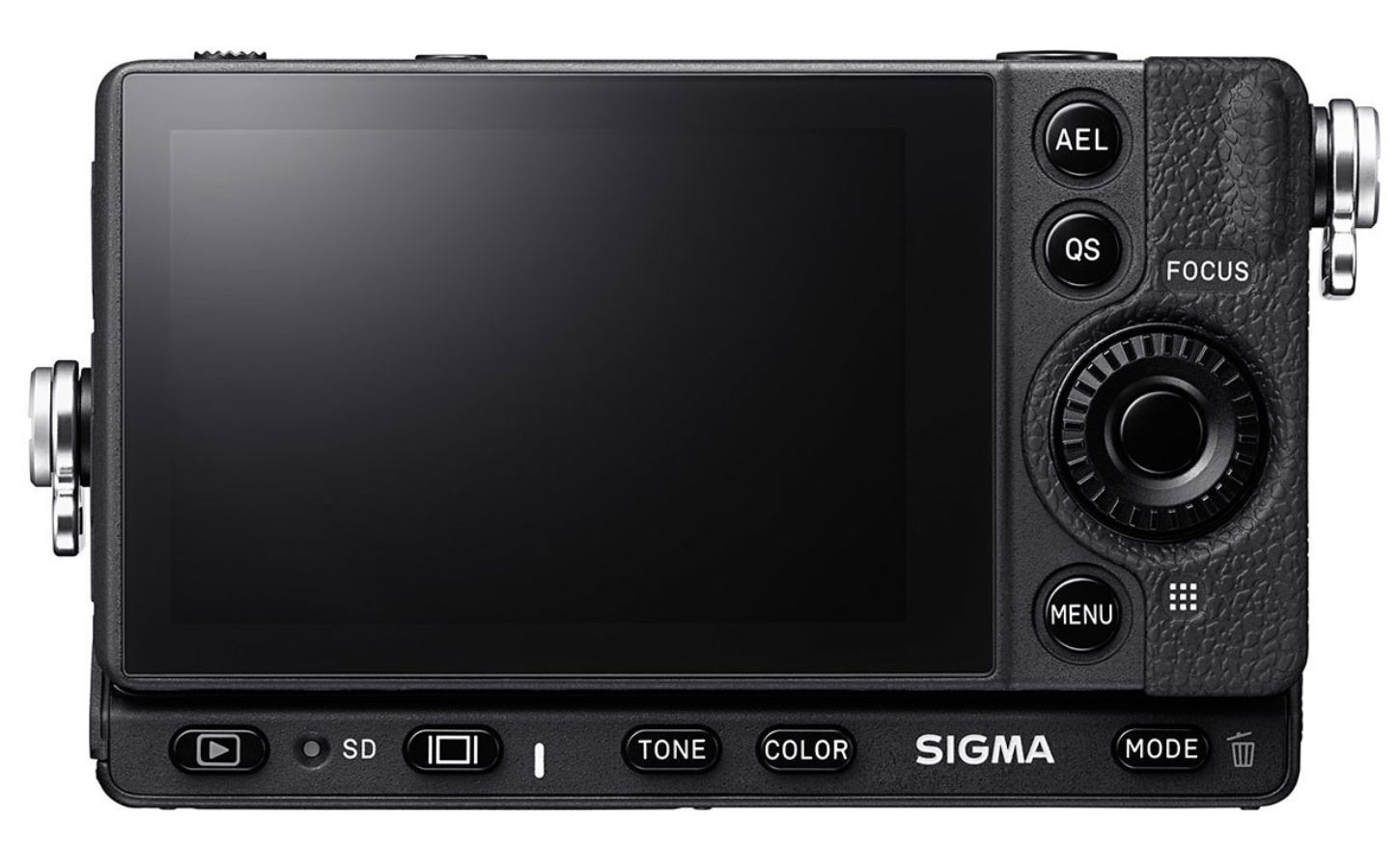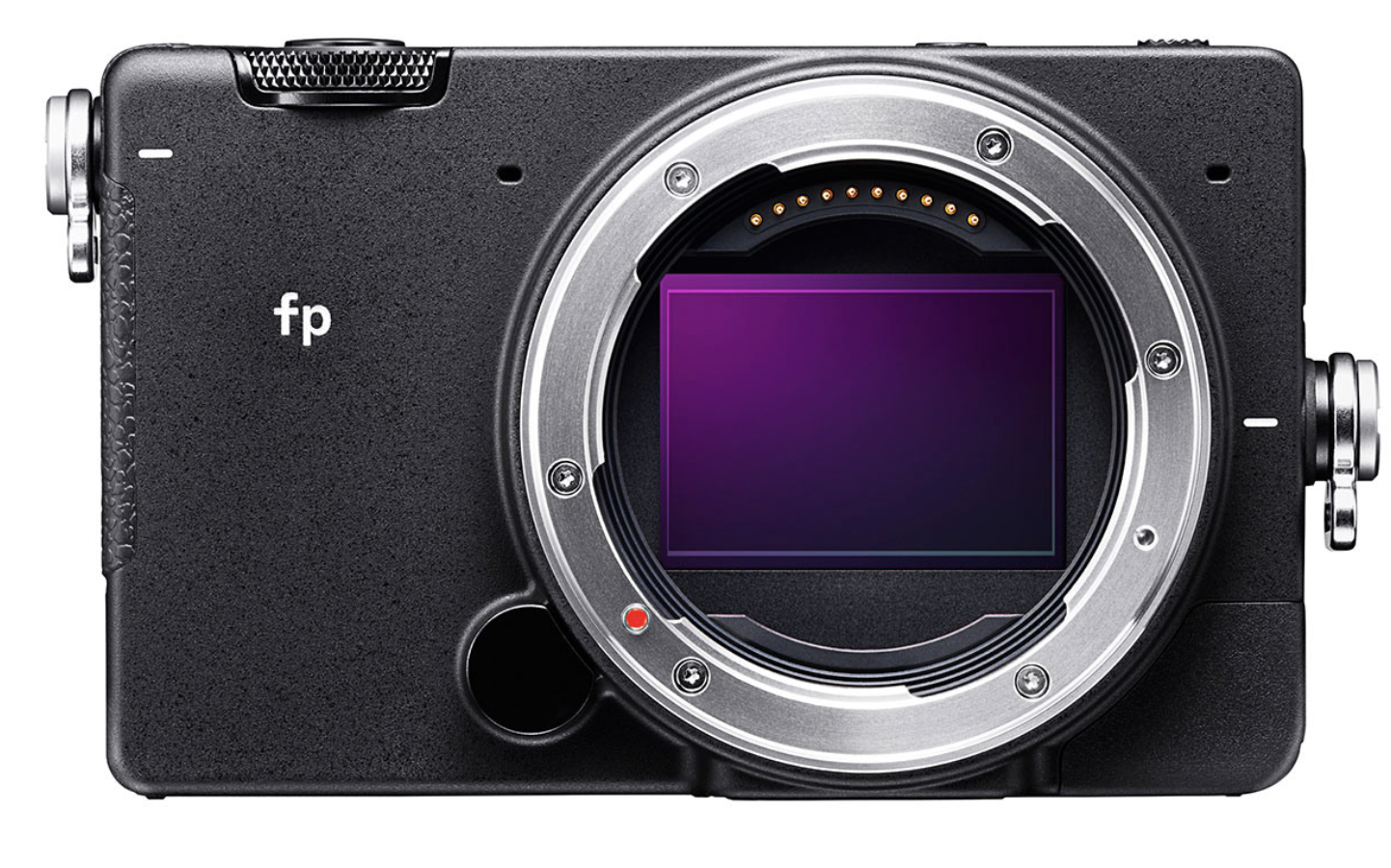Who’d have thought it? Today, folks, Sigma has announced an oddball full-frame camera that will be of great interest to Leica owners. Sigma claims that the new L-Mount Sigma

Impressively, this camera is smaller than the Leica CL and weighs about the same. To achieve these modest dimensions, the fp manages without a viewfinder (or hot-shoe to accommodate one) and it has no mechanical shutter, just an electronic shutter which, Sigma says, will improve reliability.

The new camera appears to be the full-frame equivalent of the dinky little Panasonic Lumix GM1 in the world of micro four-thirds, with the lens mount occupying the full height of the body.
Sigma says that the fp has the “smallest and lightest body possible” which allows photographers to “express creative ideas whenever they want, combined with a full-frame sensor that is suitable for serious occasions without compromising on image quality. The company claims “superb build quality that makes the camera the perfect linchpin of a high-performance lens system.”

This is certainly a camera that will create massive interest, if only for its novelty and completely unexpected arrival. The previously rumoured Foveon-sensored Sigma is still on the cards there is no indication of when it will arrive.
As soon as we get more information on this interesting development we will keep you informed. In the meantime, here is the full Sigma press release:
Press Release
SIGMA announces the “SIGMA fp”, the world’s smallest and lightest mirrorless digital camera with a full-frame image sensor
SIGMA Corporation is pleased to announce the launch of “SIGMA fp,” the world’s smallest and lightest full-frame mirrorless digital camera. The SIGMA fp incorporates a 35mm full-frame Bayer sensor with 24.6 effective megapixels in a compact body, and boasts great versatility and scalability that allows mixing-and-matching of a variety of interchangeable lenses and accessories. It is a camera that is casual enough to take anywhere, anytime, and high-spec enough for serious still and cine shooting in the highest image quality, all in a robust and classy body.
Regardless of the differences in shooting scenes and styles or genre boundaries between stills and videos, this new camera is set to expand the freedom and possibilities in image shooting and art creation further than ever before. A “pocketable full-frame” camera: SIGMA fp, is now available.
SIGMA’s take on an entirely new system camera.
The world’s smallest and lightest “pocketable full-frame” camera is here.
The environment that surrounds shooting and art creation is undergoing radical changes. In this day and age when one user may have both a high-performance interchangeable lens camera and a smartphone camera, using them flexibly according to specific purposes and settings, SIGMA stopped and questioned the inherent value of a digital camera.
As a result, SIGMA set itself to develop a user-oriented digital camera that reflected the idea of “how a camera can be” in a more flexible and true-to-life manner, without conforming to manufacturers’ ideas of camera-centric categories and hierarchy.
Development concept
Pocketable full-frame│Impressive portability and power
The “smallest and lightest body possible” with which one can express their creative ideas whenever they want, combined with a “full-frame sensor” that is suitable for serious occasions without compromising on image quality, and “superb build quality” that makes the camera the perfect linchpin of a high-performance lens system.
Scalable│Versatile scalability
An “open and liberal system” that allows one to pair the camera with lenses and accessories, whether from SIGMA or other brands, using a variety of attachments, complete with “versatile scalability” that makes the camera adaptable to any scenes.
Seamless│Full-fledged, liberating shooting functions
A “highly intuitive UI” that allows one to move between full-fledged still and cine shooting modes with just one finger, making for a “seamless and truly creative tool” that goes beyond style and genre differences.
Making it a top priority to realize these three concepts all at once and without requiring any trade-offs, SIGMA selected only the elements and mechanisms that were truly needed with no compromise to create the SIGMA fp as the embodiment of an “entirely new digital camera that SIGMA can offer to the world right now.”
It’s a camera body that changes its configuration with great flexibility centered around the user. It’s a tool that gives the user the joy of a new camera life that they themselves are yet to discover. It’s a new system camera that will overturn the paradigm of “digital cameras.”
The SIGMA fp is here to broaden the potential of “image shooting” ad infinitum.
Key features
World’s smallest and lightest full-frame camera
With overall dimensions of 112.6×69.9×45.3mm and body weight of 370g, without battery and card, the SIGMA fp is the world’s smallest and lightest full-frame mirrorless camera. It employs a back-illuminated 35mm full-frame Bayer sensor with 24.6 effective megapixels for high-quality images.
Covered on the front and back sides with die-cast aluminum alloy for its superior robustness and thermal conductivity, the compact body of the SIGMA fp is built with a signature heat sink structure and sealing on 42 points for a dust- and splash-proof structure, making it a perfect camera to use for long hours under all types of environments. With its small body and great adaptability, the SIGMA fp enhances the joy of full-frame image quality, no matter what one’s shooting settings may be.
Electronic shutter for a variety of settings
“Able to shoot whenever you want, wherever you want”―to realize this concept, the SIGMA fp incorporates a construction without a mechanical shutter for quiet shooting. This allows shooting without worrying about noise in a situation where one would have hesitated with a conventional camera because of its shutter sound. It gives no shutter shock even when shooting in quick succession at a frame rate of 18 frames/sec. eliminating even the tiniest shakes.
In addition, the absence of a mechanical shutter, whose performance level can change through continuous operation, means that the SIGMA fp is a camera with improved reliability.
Superior options in artistic picture & video creations
The SIGMA fp is a frontrunner in incorporating functions that help exploring the photographic and cinematic creations.
For instance, in addition to a number of different color modes, the SIGMA fp has newly introduced the “Teal and Orange” mode, inspired by the color grading technique commonly used in Hollywood films. Each mode has a slider that enables adjustment of the strength of the effects to apply, providing even greater control in one’s creations.
The SIGMA fp is the first SIGMA camera to employ a tone curve adjustment function in addition to “Fill Light”, a special adjustment function of SIGMA Photo Pro, and they are both available in-camera. It has also newly introduced “TONE” and “COLOR” buttons for a quick access to each of the tone control and color mode menus. With these enhanced functions and a variety of operation elements, the SIGMA fp makes it simple and easy to create an image, in-camera with great details, be it still or video.
Advanced picture & video generating functions
The SIGMA fp employs a number of advanced technologies for image and video generation.
The Auto HDR function takes advantage of an electronic shutter to take multiple pictures of different exposures (3 frames for still photography and 2 frames for video) at once, which can then be merged into a single picture or video with a great dynamic range that could not have been achieved in normal shooting. The Cinemagraph function, meanwhile, achieves a hybrid between still photography and video in the form of animated GIFs in which parts of a still image keep moving. With this function, the SIGMA fp is capable of creating Cinemagraphs in-camera.
Note: The Auto HDR function in the Cine mode and the Cinemagraph function are to become available via firmware update scheduled at a later date.
L-Mount
The SIGMA fp uses the L-Mount, characterized by a short flange focal length, large diameter, and superior durability. For interchangeable lenses, in addition to the wide-ranging choices of SIGMA lenses, other manufacturers’ lenses can also be an option through the L-Mount Alliance with Leica Camera AG and Panasonic Corporation. With the SIGMA MOUNT CONVERTER MC-21, SIGMA SA mount and SIGMA’s CANON EF mount lenses can be used, making the best out of one’s lens investment.
Supports full-fledged video production
For raw video data, the SIGMA fp supports 12-bit CinemaDNG external recording. With 4K UHD/24fps recording, it produces video data that can be used even in filmmaking. It also supports ALL-I recording which is optimal for editing H.264 compressed videos.
For video output, it uses USB3.1(GEN1), which allows a smooth data transmission to an external recording unit. As it also supports cinema camera-like user interfaces, the SIGMA fp is a camera that can be taken straight to video production settings.
Note: The feature of playing CinemaDNG footages in-camera is to become available via firmware update scheduled at a later date.
Seamless transition between Still and Cine modes
Going from the Still mode to the Cine mode at the flip of a switch. Each mode comes with a specially designed operation system and displays, making it possible to concentrate on shooting in each mode, stress-free.


Only very slightly larger than the Sony RX1, though any lens would eliminate that comparison. I wonder if the collapsible Summicron in the video could actually be collapsed? That might it truly pocketable.
If a collapsible lens can be collapsed in front of a piece of film (inside a Leica) then it can also be collapsed in front of a sensor sitting at the same distance from a Leica-fit lens mount as that piece of film would be, unless there’s some structure within the camera which prevents it.
So a collapsible Summicron can be collapsed into, for example, a Ricoh GXR with the A12 Leica mount. It can be collapsed into a Sony A7 with a Leica-to-Sony-E adaptor on the camera body ..and so on. So yes, if you can use a collapsible Summicron on the Sigma fp, you’d be able to collapse it into the Sigma fp, unless there’s some piece of hardware within the camera’s lens throat which prevents it.
Film and sensor will always have the same distance between them and the lens mount in order for the lens to be used through its full focus range. So if it collapses on one, e.g; Leica M3, there’ll be the identical distance for it to be collapsed into another camera body on which you’re using that same lens, e.g; Sigma fp.
Good point David. I remember once expecting to use a collapsible summicron on a (film) Leica CL, but it wouldn’t work because of the swing out meter arm. I’d forgotten about that. Perhaps the FP may be the new the full frame equivalent to the original CL, minus the rangefinder of course. That may be it’s niche, other than as a video camera.
Well, Sigma could never price anything dull, of course, but I do have difficulty in seeing the particular niche this camera will fill, except for those who will buy it because it is – er – so sigmatesque. I should want something with a bit more heft for steady video or interchangeable lenses. I could have seen much more point in producing a trio of full-frame, fixed-lens cameras of this size – with or without Foveon sensors – rather like the Merrill range.
To paraphrase dialogue from the film “Thirteen Days”, I think we’re watching a conversation between Sigma and Leica. Sigma is saying “we can build a full-frame camera smaller than your M cameras, using your L lens mount, AND we’ve given this teeny camera autofocus.
Leica – ever a slave to Apple’s way of things – is thinking “Apple designs in California, but their products are made in China”. Why don’t we have Sigma make our cameras from now on? No-one would know: we’d have the components made by Sigma, then sent to us in Germany for final assembly (..as we do with our cameras which have been made in Portugal since 1972/73..) ..or we’d just have Sigma make the entire cameras – you know, like the original CL, or the R series SLRs made for us by Minolta.
(Gotta go now; my Beloved wants breakfast!..)
It could be even smaller with an M mount and there would be space for an EVF….. But yes, I agree, the L-Mount Alliance is showing that it can spur innovation. While this new camera is clearly aimed primarily at videographers, there is absolutely no reason why a dedicated stills version (with more appropriate controls replacing the many video options) could not be produced and, as you say, rebadged by Leica. – either L-Mount or M-Mount. I did notice that several of the publicity shots show a vintage M lens in use, so they are clearly suggesting that owners of M lenses will find the camera interesting. Enjoy your proino
I guess there’s no real reason that Leica cannot make a full-frame version of the CL, except that it might cannabalize SL sales. But maybe the appearance of the Panny S1 will delay the SL2 indefinitely, and a FF CL will happen.
I have long thought that Sigma is making the TL lenses for Leica at least (I’ve never handled a SL lens, but maybe those, too?).
Interesting times…
Incidentally, I’ve often wondered how many screws it takes and how much labour takes to ensure the “Made in Germany” tag rather than Made In Portugal or Made in Japan. The C-Lux and D-Lux are clearly marked “Made in China” but not sure about the new V-Lux. There must be a regulation somewhere that specifies how much fixing has to be done in Germany to get the tag.
I read the actual proportion recently, but can’t, now, remember where ..I think it’s something like one third of the work. I’ll have a hunt..
Meanwhile, Wikipedia says “..In 1995, the Oberlandesgericht Stuttgart ruled that the term Made in Germany is misleading according to Germany’s Fair Trades Act when the largest part is not German raw materials or German craftsmanship”. So the German court in Stuttgart thinks that the term is misleading.
I heard that the only cameras in the Leica range that are wholly made in Europe (Wetzlar and Portugal) are the M and the S. everything else is partly, if not entirely (as in the case of C-Lux/D-Lux) made outside Europe. It is possible that the Panasonic factory churning out the S1 has a big hand in the SL and, probably, the CL.
Looks interesting, and those lens will sell to SL and S1 owners looking to broaden the tools at their disposal – However not for me, reminds me of the Sony stuff in recent years and I am not a fan of those cameras.
I will watch on and see what people get out of them when they are in the wild.
How was this radically different than, say, the Canon M6?
The M6 was an APS-C camera as far as I can remember, so there is a big difference here. The Sigma fp is the smallest full-frame digital as far as I know.
I don’t know beans about Sigma, just remember some strange looking Quattro camera , how were their sales numbers ? Got give them A for trying.
Sigma has upped their game in the past few years. The Art lenses, most of which will find their way to the L-Mount, have had rave reviews despite the relatively low price compared with Leica SL and, even, the new Panasonic optics. I’m looking forward to being able to review some of them, particularly that new 45mm f/2.8/
Sigma are very proud of their Foveon sensors, and they are capable of some stunning results, as long as you are happy to stick to only making photographs outside on a sunny day at iso 100. This makes them both a good thing and a bad thing simultaneously.
Just wondering whether this introduction is a bit like that Ricoh GX kit from yesteryear.
That the next release following this “FP” will be a similar sized camera but with a “full frame” Foveon sensor?
Now it is perfectly feasible to walk out with the latter in hand and the former in pocket. A set up for all occasions.
Who can say?
I hadn’t had much time to absorb the details of the fp before rushing out the article. But the more I look at it, the more it appears to have been designed primarily with video in mind. For those of us who spend our time disabling video buttons, the fp might not be the most sensible choice. Whatever the outcome, there does appear to be a welcome breath of innovation from Sigma. And the lenses are very attractive and cheap. I can see many SL or S1 owners going for them.